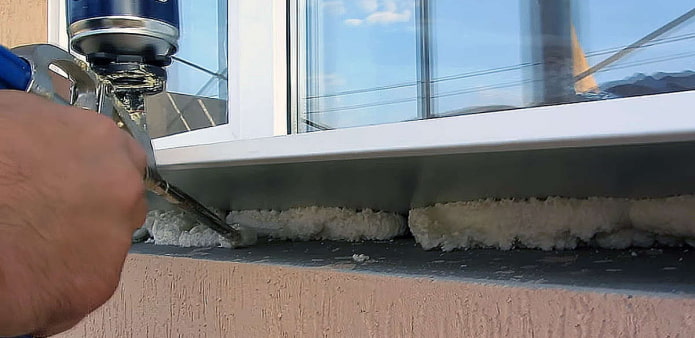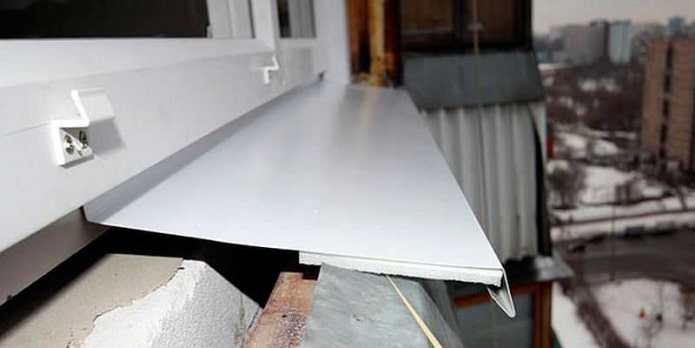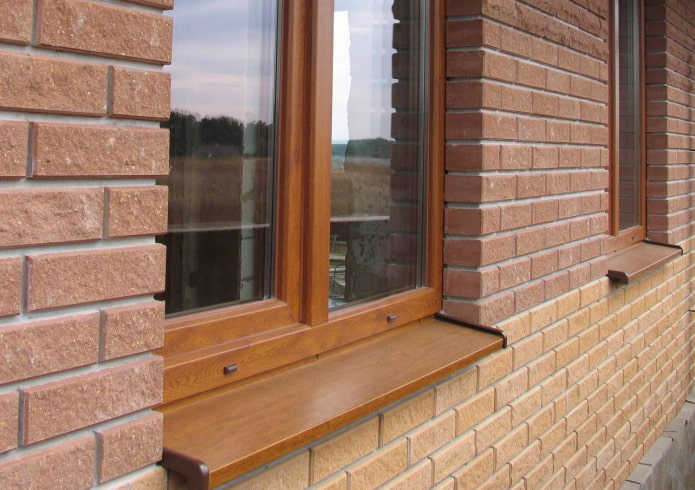Replacing the ebb with a noiseless material
The main reason why the ebb is noisy is the material it is made of. Despite the optimally selected width of 0.55 mm and the polymer coating, the aluminum or steel profile reacts quite actively to rain and wind. If the budget allows, it is easier to replace the metal with more expensive materials.
- Clinker ebb made of refractory clay will ideally fit into the exterior of brick houses.
- Marble and granite ebbs are distinguished by their laconicism and durability. The structure is several times heavier than a metal one, so it can withstand heavy rain and wind more easily.
- Plastic options are considered to be among the quietest and match modern double-glazed windows made of the same material.
If your budget is limited or you can’t replace the external window sill, you’ll have to modify the existing one.

Additional fastening
According to the design of most developers, the ebb structure is fastened only on one side. The lower edge of the sheet hangs freely in the air and knocks against the facade under wind load. A simple and budget option to reduce noise is to fix the sheet with a few more screws.
- The window sill profile is dismantled.
- On the front part of the ebb at a distance of 30-40, holes are drilled for self-tapping screws. Additional screws can be screwed in from the end sides or from above.
- The sheet is installed in its original place and fastened first to the frame, and then through the drilled holes to the support ledge or facade.
Despite the cheapness and ease of implementation, this method of fastening also has enough disadvantages. When screwing in screws from above, the thin metal sheet may deform, and water will accumulate in the resulting depressions.

Sealing with mounting foam
The ebb system must be attached to the frame with screws and to the base with mounting foam. If the installation technology for additional elements is not followed, a gap will form between the metal and the brick. The lack or complete absence of sealant not only provides a “drum roll” when it rains, but also leads to freezing of the substitution profile.
By removing this void, you can significantly reduce the vibration level of the sheet, increase sound and heat insulation.
- The ebb is separated from the glass unit.
- The external window sill is filled with mounting foam.
- Until the foam begins to harden, the ebb structure is returned to its place.
In addition to mounting foam, any roofing sealant is suitable for the job.

Noise-suppressing lining made of vibrosheet
Foil sheets of butyl rubber sealant used for soundproofing cars also cope well with the repair of the casting structure. Vibrosheet is odorless, does not spread and is not afraid of moisture. The self-adhesive surface allows for quick installation and does not require special skills.
Vibrosheet is available in thicknesses from 1.5 to 4 mm. The louder the window sill rattles in the rain and wind, the more impressive the insulation layer should be. You will also need a pressure roller, although you can do without it if the work is small.
- Dismantle the ebb tide by unscrewing the screws.
- After removing the protective paper, attach the insulation to the back of the metal sheet with the self-adhesive side.
- Return the ebb tide to its place and fix it.
In some cases, it is enough to put a layer of foam rubber or polystyrene foam under the outer window sill as a noise-suppressing layer.

Weightening the ebb tide structure
Adding extra weight of thin sheet steel can also bear fruit. To increase the weight, glue the bottom side of the ebb with roofing tape, rubber or other material.
- Unscrew the window sill profile, clean it, and let it dry.
- Warm up the roofing tape to room temperature if the work is being done in winter, and glue it tightly to the bottom of the profile.
- If necessary, add a few more layers of tape and return the ebb to its place.

The issue of soundproofing, including window soundproofing, should be addressed at the design stage of the house. But if the problem of noisy ebbs already exists, then you can choose any of the presented methods and ensure your peace of mind.
Now reading:
- Volumetric 3D curtains: more than 50 photos and new design ideas for photo printing.
- Kitchen-living room design ideas and examples of 15 sq. m.: 45 photos
- Yellow sofa in the interior: 70+ photos and ideas for the living room, kitchen and children’s room
- Wooden ceilings: 90 photos and original ideas for your interior design.
- Whitewashing the ceiling: advantages and disadvantages, step-by-step guide with video for beginners.